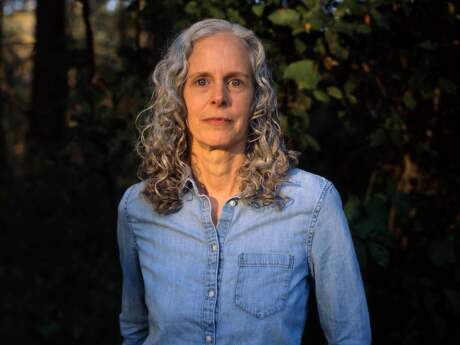In Their Own Words
Craig Santos Perez's “from sounding lines [chamorro standard time: UTC +10:00]”

from sounding lines [chamorro standard time: UTC +10:00]
~
remember just
the time
-table mom made
and taped
to the fridge when it
is two pm here
it is eight am the next
day there—
mom always talking story
on the phone—
long distance
counting
minutes when it
is eleven am there
it is five pm the day
before here
her voice
transoceanic
cables
pull sounding lines
between island
and continent
when it is six pm here
it is twelve pm
the next day there—
she shows [us]
how to dial
"one six seven one
and the number"—
rotary vocal cords
pulse when
it is one am here
it is seven pm the next
day passes
into years—
fewer and fewer
calls lost
connections
avian silence—i
want to remember
when [we] once
belonged—
Introduction by Christopher Soto
Craig Santos Perez, a native Chamoru poet, was born and raised on the Pacific Island of Guåhan (Guam). His third collection of poems, from Unincorporated Territory [guma'], code switches languages and poetic forms. The poems in this collection act in resistance to histories of American (and Japanese) colonialism. The poems in this collection are a searching for and exploring the notion of home. "When I step into the open night air, I breathe: the wind, /Puntan yan Fu'una, their hands—manngigne' because [our] lungs / are ninety percent water." Perez is a poet of citation, recollection, reimagination. from Unincorporated Territory [guma'] is a linguistically and historically vast collection.
Craig Santos Perez on "from sounding lines [chamorro standard time: UTC +10:00]"
In my new book, I explore the theme of migration in a multitude of ways, including its relation to colonial land takings, military enlistment, education, debt, tourism, memory, citizenship, food, and extinction. The poem above, however, looks at migration in relation to time zones and telephone calls.
When my family first migrated from the U.S. unincorporated territory of Guam to California in 1995, we had to figure out the time difference in order to call our relatives and friends back home. Guam lies west of the international dateline within the Chamorro Time Zone, which was established by the U.S. Congress (Public Law 106-564) in 2000, and previously known as the Guam Time Zone. Chamorro Time Zone observes standard time by adding ten hours to coordinated universal time (UTC+10). Thus, Guam is 15 hours ahead of New York and 17 (or 18 depending on daylight savings) hours ahead of San Francisco.
To help us keep track of the time difference, my mom made a timetable (this was before we had internet access or smart phones). She taught us how to dial the international code, "011" and Guam's country code, "671." We had time limits for how long we could talk because "international" rates applied, and every minute costs money. In 1997, Guam became part of the North American Numbering Plan and was considered "domestic" and "nationwide long distance." Thus, "671" became our "area code" and we only had to dial "1" before the area code to call home.
During that time, we had a rotary phone and I remember the pulsing that accompanied a turn of the dial. Since the phone is connected through wire, I made the association with "sounding lines," which are ropes with plummets that were used to measure the depth of a body of water (today, "echo sounding"—using sonar to measure depth—is more common). Because our calls home were traveling across the Pacific, I imagined each phone call was like casting our voices into the watery distance of migration. As the years began to pass, we called home less and less. In a sense, those phone calls registered to growing distance and depth between home and diaspora, island and continent.
I highlight the underwater cables not only to suggest the vast distance between Guam and California, but also to reference the fact that there exist over thirty thousand miles of submarine cables in the Pacific. Furthermore, Guam is an important node for the transpacific cable network (more undersea cables have "landed" on Guam than in California), connecting America, the Pacific, and Asia. This is just another reason why Guam is considered a strategic location for American empire.
Even though all this information is important to understanding how colonialism operates on Guam, this information is merely sounded and alluded to in the poem. In the end, the poem focuses on how there came a certain point where I no longer communicated with friends and family back home. I lost touch. The line was cut. We were disconnected. The final phrase (which is a re-articulation of the phrase, "Where we once belonged," the title of a famous novel by Pacific writer Sia Figiel), is meant to capture the feeling of wanting to return home to those connections that I once felt.


